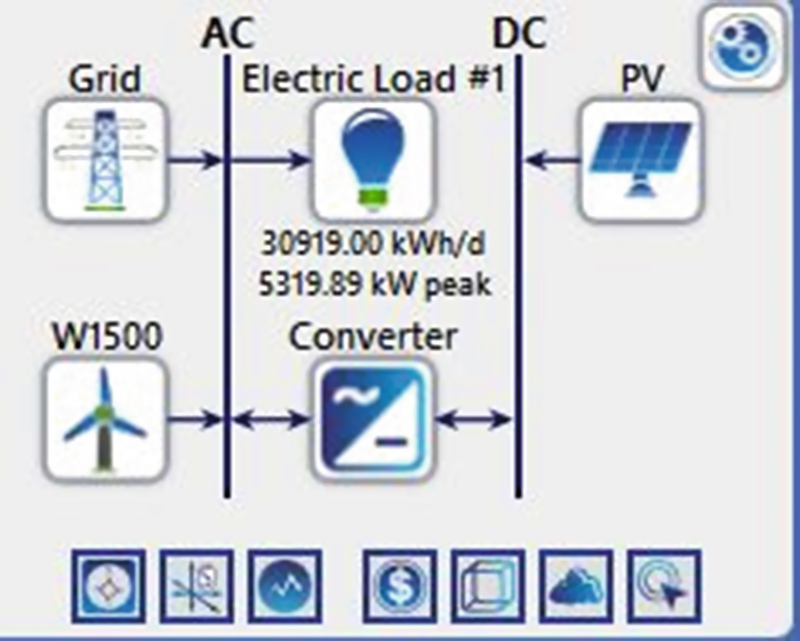

- #How to input coordinates into homer energy full
- #How to input coordinates into homer energy software
This challenge is closely tied to the use of conventionally centralised energy generation and the weak distribution network. For example, the power per capital stood at about 31 (based on the December 2012 power generation data and 170 million people), which is far below the majority of countries like China (260 W/capita), Brazil (480 W/capita), South Africa (1047 W/capita), UK (1266 W/capita), etc.

In Nigeria, power generation and distribution is a major challenge. A better solution to the energy starvation of the rural areas would be the deployment of a decentralised energy project, through the utilisation of renewable energy sources, as a majority of rural areas is dispersed settlements with relatively low energy demand. More so, there is a concern for international development agencies-namely the United Nation Development Programme (UNDP), the Africa Development Bank (AfDB), the World Bank, the Global Environmental Facility (GEF), the Africa Renewable Energy Fund (ARDF), etc.-and regional and national governments to provide electricity to the about 16 % of the world population living without electricity in the rural communities. Therefore, there is a need for a strong motivation to implement a more sustainable energy mix globally, driven by positive polices. It has been reported that the global demand for primary energy is steadily increasing and that if the demand is maintained at a conservative average rate of 2 %, the total global energy demand will increase by 100 % in 30 years. All the intergovernmental organisations continue to stress the importance of drastic reductions in the use of climate impeding energy sources (especially fossil fuels) to minimise the dangerous impacts of climates change. This is evident from an avalanche of literature from intergovernmental organisations towards the policy of deploying a clean and creative energy supply, namely the Intergovernmental Panel on Climate Change (IPCC). 7 of the 17 Sustainable Development Goals (SDGs), which is due to replace the Millennium Development Goals (MDGs). These challenges form the nucleus of the search for optimal socio-economic and environmental decisions to deploy clean and affordable energy solutions, as stipulated in No. The desire to have access to energy has created negative multiplier effects, namely climate change, non-equilibrium of the ecosystem, pollution of the environment and anxiety among nations. Sub-Sahara Africa countries and other developing nations are facing challenges of development, which can be directly linked to the means and methods of energy generation and its use. The suggested energy system could be useful in other coastline communities globally once there are available renewable energy sources.
#How to input coordinates into homer energy full
It is envisaged that the implementation of the suggested energy system with other environmentally responsible interventions would support the Niger Delta coastline communities, whose livelihoods have been impaired by gas and oil exploration, to attain their full environmental, social and economic potentials. It is shown that both positive energy policies of the Federal Government of Nigeria towards renewable energy penetration and the support from the oil producing companies towards their operational areas would see the cost of electricity being significantly reduced. The best energy system gives the best components with an appropriate operating strategy to provide an efficient, reliable, cost-effective and environment-friendly system. The suggested best hybrid energy system has a cost of electricity of 0.787 $/kWh and potential to reduce gas emission by 48.5 %/year. The results show that the most promising hybrid energy system, based on a multi-criteria decision analysis and prevailing economic data, is the diesel-PV-wind energy system, which has a relative closeness of 0.489226. The NASA SEE data base with monthly averaged values for global horizontal radiation over a 22-year period (July 1983–June 2005) was considered in the current analysis.

The decision is based on four alternatives as well as 15 different economic, social and environmental criteria.
#How to input coordinates into homer energy software
The HOMER hybrid optimisation software and multi-criteria decision-making, based on the TOPSIS algorithm, were used to determine the best hybrid energy system. Therefore, there is an urgent need to provide an optimal sustainable and environment-friendly energy system for the coastline communities in Nigeria, which has the potential of ameliorating the climate change in this country. Nigeria’s rural coastline communities have long suffered from the consequences of both poor rural electrification and environmental degradation.


 0 kommentar(er)
0 kommentar(er)
